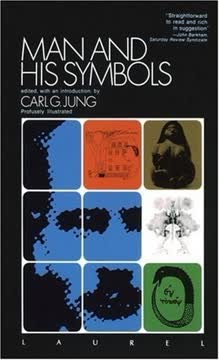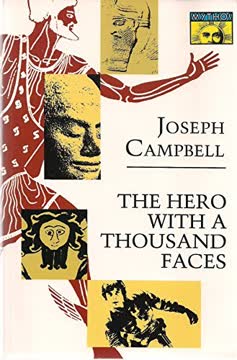つの重要なポイント
1. 自我と自己の関係が心理的発達を駆動する
自我は自己に対して、動かされるものが動かすものに対するように立つ。自己は、いわば自我が進化する先天的な存在である。それは、無意識のうちに自我の予兆を含んでいる。
自我と自己の定義。 自我は意識の中心であり、自己は意識と無意識の両方を含む全体の心の中心である。自己は自我を含む全人格を組織し、統合する。
発達段階。 心理的成長は以下のような循環的プロセスを含む:
- 元々の無意識の全体性(自我-自己の同一性)
- 自我と自己の分離と差別化
- 自我と自己の意識的再統合
このサイクルは意識が拡大するにつれて生涯を通じて繰り返される。健全な「自我-自己軸」—自我と自己の重要なつながり—は、精神的安定と成長に不可欠である。
2. 膨張と疎外は個性化の必要な段階である
すべての進歩の前には膨張の状態があり、それによって意識的な心はその天上的な起源を認識する。
膨張の定義。 膨張は自我が自己と同一視し、神のような属性を持つときに起こる。これにより、誇大妄想、非現実的な野心、適切な謙虚さの欠如が生じる。
疎外が続く。 膨張した状態は現実によって必然的に打ち破られ、疎外—意味と価値の感覚からの痛みを伴う分離—が生じる。これが危機を引き起こし、より高い意識へと導くことがある。
循環的プロセス。 心理的発達は以下のような繰り返しのサイクルを含む:
- 膨張(自己との同一視)
- 疎外(自己からの分離)
- 自己との意識的関係
各サイクルは無意識の一部を統合し、意識を拡大する。
3. 自己との遭遇が意識を変革する
人生の頂点に達し、蕾が開き、小さなものから大きなものが現れるとき、ニーチェが言うように、「一つが二つになる」。そして、常に存在していたが見えなかった大きな姿が、小さな人格に啓示の力で現れる。
神秘的な体験。 自己との意識的な遭遇は、しばしば疎外や存在の危機の状態に先行する。それは意味と目的の深遠で変革的な啓示として現れる。
自我の変革。 自我はこの遭遇によって打ち負かされ、解放される。自我はその仮想的な自律性を放棄しなければならないが、より深いエネルギーと意味の源に接続することができる。
継続的な関係。 初期の遭遇の後、課題は自我と自己の間の継続的な意識的関係を確立することである。これには以下が含まれる:
- 自我と自己の区別
- 重要な自我-自己のつながりを維持する
- 無意識の内容を意識に統合する
4. 象徴と夢が無意識の心を明らかにする
象徴は多くの意味を持つ不確定な表現であり、容易に定義できないものを指し示すため、完全には知られていない。
象徴の機能。 象徴は意識と無意識を橋渡しし、理性的な心では完全に把握できない意味を伝える。それらは精神的エネルギーを解放し、変革する。
夢の解釈。 夢は無意識への直接的な窓を提供する。解釈のための主要な原則:
- 個人的な連想を考慮する
- 文化的/神話的な類似点で拡大する
- 意識的態度の補償を探す
- 現在の生活状況に関連付ける
一般的な象徴。 重要な象徴には以下が含まれる:
- マンダラ(全体性、自己)
- 英雄の旅(個性化のプロセス)
- 神聖な子供(新しい可能性)
- 賢者(内なる知恵)
- 影の人物(抑圧された自己の側面)
5. キリストは個性化された自我の模範である
私たちプロテスタントは、この質問に直面しなければならない:私たちは「キリストの模倣」を、彼の生涯を模倣し、彼の聖痕を真似るという意味で理解すべきか、それとも彼が個々の独自性を持って生きたように、私たち自身の適切な生涯を生きるという深い意味で理解すべきか?
キリストは自己の象徴。 キリストの姿は、自己と理想的な個性化された自我の両方を表している。重要な側面には以下が含まれる:
- 人間と神の統一
- 自我の欲望の犠牲
- 死と再生
倫理的教え。 キリストの教えは心理学的に解釈され、個性化のための指針を提供する:
- 影を受け入れる(「罪のない者が…」)
- 自我中心性を超越する(「隣人を愛せ…」)
- 超個人的なものに関連付ける(「我らの父よ…」)
個人的な使命。 キリストの真の模倣は、自分自身の独自の人生の道と可能性を見つけ、実現することであり、文字通りの模倣ではない。
6. 個性は超越的な起源と目的を持つ
心理的個人、または個性は先天的に無意識の存在であるが、その特有の性質の意識が存在する限りにおいてのみ意識的に存在する。
超越的なアイデンティティ。 各人の個性は集合的無意識に起源を持ち、「名前が天に書かれている」という考えで象徴される。
独自性と普遍性。 個性化の目標は、独自の自己を実現しながらも、集合的な人間経験とのつながりを認識することである。
意味と目的。 自分の個性を発見し、実現することは、エゴの満足を超えた意味と目的の感覚を提供する。これには以下が含まれる:
- 集合的な規範からの区別
- 心の無意識の側面を統合する
- 自己に意識的に関連付ける
7. キリストの血は精神的変革を象徴する
哲学者の石がその染料と発展した完全性によって他の不完全で卑しい金属を純金に変える力を持つように、私たちの天の王であり基本的な礎石であるイエス・キリストは、その祝福されたルビー色の染料、すなわちその血によって、私たち罪人と不完全な人間を浄化することができる。
変革の本質。 キリストの血は、意識を救済し高める自己の変革エネルギーを象徴する。
錬金術的な類似。 錬金術のイメージは精神的変革の豊かな象徴を提供する:
- 鉛を金に変える(影の変革)
- 五元素を抽出する(自己の実現)
- 合一(対立の統合)
心理的効果。 この変革的な「血」との接触は以下をもたらす:
- 無意識の罪悪感からの解放
- 超個人的な意味への接続
- 内的な葛藤の和解
8. 哲学者の石は個性化の目標を象徴する
哲学者の石は、あらゆる不完全な地上の物質をその最も完全な状態に変える力を持つ。
究極の全体性。 哲学者の石は、意識と無意識の統合による完全に実現された自己を象徴し、精神的な全体性と創造的な可能性をもたらす。
変革の力。 石の主要な属性は、個性化された心と平行している:
- 卑しい金属を金に変える(意識を高める)
- すべての病気を治す(神経症を解決する)
- 永遠の命を与える(時間を超えた自己に接続する)
- 普遍的な知恵を授ける(集合的無意識にアクセスする)
継続的なプロセス。 完全な自己の実現は理想として残るが、個性化のプロセスは生涯を通じてより大きな全体性と統合に向けて働き続ける。
最終更新日:
FAQ
What's Ego and Archetype about?
- Focus on individuation: The book explores the journey to psychological wholeness, known as individuation, which is central to analytical psychology.
- Ego and Self relationship: It discusses the dynamic between the ego and the archetypal Self, emphasizing how this relationship shapes an individual's worldview and sense of purpose.
- Symbolism in life: Edinger connects individuation to encounters with symbolism in religion, myth, dreams, and art, suggesting that these experiences are vital for personal growth.
Why should I read Ego and Archetype?
- Understanding psychological development: The book provides insights into the stages of psychological development and the importance of integrating the unconscious into conscious life.
- Connection to spirituality: It offers a unique perspective on how the journey of individuation parallels spiritual quests, making it relevant for those interested in psychology and spirituality.
- Rich in symbolism: Readers will appreciate the exploration of symbols and archetypes, which can deepen their understanding of personal and collective experiences.
What are the key takeaways of Ego and Archetype?
- Individuation is essential: The process of individuation is crucial for achieving psychological wholeness and understanding one's true self.
- Ego-Self axis: The book emphasizes the importance of the ego-Self axis, which serves as a vital connection between the conscious and unconscious aspects of the psyche.
- Role of symbols: Symbols play a significant role in personal development, acting as bridges to deeper understanding and integration of the psyche.
How does Edward F. Edinger define individuation in Ego and Archetype?
- Journey to wholeness: Individuation is described as the process through which an individual becomes aware of and integrates the various aspects of their psyche.
- Encounter with the Self: It involves recognizing the Self as the central archetype that guides personal development and self-realization.
- Cyclical process: Edinger presents individuation as a cyclical journey, marked by alternating states of inflation and alienation throughout life.
What is the ego-Self axis in Ego and Archetype?
- Connection between ego and Self: The ego-Self axis represents the relationship between the conscious ego and the archetypal Self, essential for maintaining psychological integrity.
- Impact on development: Damage to this axis can lead to alienation and a sense of meaninglessness, highlighting its importance in psychological health.
- Facilitates individuation: A well-functioning ego-Self axis allows for a dialogue between the ego and the Self, promoting growth and self-awareness.
What role do symbols play in Ego and Archetype?
- Symbols as carriers of meaning: Symbols are seen as living entities that convey deep psychological meaning and connect individuals to their unconscious.
- Facilitating personal growth: They help individuals navigate their inner worlds, providing insights that can lead to healing and transformation.
- Connection to archetypes: Symbols are manifestations of archetypes, representing universal patterns of human experience that can guide personal development.
How does Ego and Archetype relate to alchemy?
- Alchemy as a metaphor: Edinger uses alchemical symbolism to illustrate the psychological processes of transformation and individuation.
- Philosophers' Stone as Self: The Philosophers' Stone represents the ultimate goal of both alchemy and individuation, symbolizing the integration of the psyche and the realization of the Self.
- Transformation processes: The alchemical processes of solutio and coagulatio are mirrored in the psychological processes of dissolution and integration.
How does Edward F. Edinger relate Christ to the individuation process in Ego and Archetype?
- Christ as a symbol: Edinger presents Christ as a powerful symbol of the Self, embodying the journey of individuation and the integration of opposites.
- Dual nature of Christ: The paradox of Christ being both God and man reflects the complexity of the individuation process, where the ego must reconcile its identity with the greater Self.
- Model for personal growth: Christ's teachings and experiences serve as a guide for individuals seeking to navigate their own paths toward wholeness.
What is the significance of the Book of Job in Ego and Archetype?
- Symbol of individuation: The Book of Job is analyzed as a narrative that illustrates the process of individuation and the encounter with the Self.
- Experience of suffering: Job's trials represent the necessary suffering that leads to greater self-awareness and understanding of the divine.
- Transformation through adversity: The story emphasizes that through hardship and alienation, one can achieve a deeper connection with the archetypal psyche.
How does Ego and Archetype address the concept of duality?
- Union of opposites: The book emphasizes the importance of reconciling dualities within the psyche, such as the ego and the Self, masculine and feminine, and light and dark.
- Symbolic representations: Edinger uses various symbols to illustrate the dynamic interplay between opposites, suggesting that these dualities can lead to growth and transformation.
- Psychological implications: Understanding and integrating dualities can help individuals navigate their inner conflicts and achieve a greater sense of self-awareness.
What are the best quotes from Ego and Archetype and what do they mean?
- “The ego stands to the Self as the moved to the mover”: This quote highlights the dynamic relationship between the conscious ego and the archetypal Self, emphasizing the Self's role as the guiding force in personal development.
- “Man’s extremity is God’s opportunity”: This suggests that moments of crisis and despair can lead to profound spiritual awakening and connection with the Self.
- “The original state of affairs–experiencing oneself as the center of the universe–can persist long past childhood”: This reflects the idea that many adults still grapple with inflated self-perceptions, which can hinder their growth and individuation.
How does Ego and Archetype address the concept of alienation?
- Alienation as a necessary phase: Edinger discusses alienation as a crucial part of the individuation process, where the ego must separate from the Self to grow.
- Consequences of alienation: The book explores how alienation can lead to feelings of despair and meaninglessness, emphasizing the importance of reconnecting with the Self.
- Path to healing: Through understanding and integrating the experience of alienation, individuals can find their way back to a more meaningful existence and a stronger connection to their inner selves.
レビュー
エドワード・F・エディンガーの『エゴと元型』は、ユング派の個性化、エゴと自己の関係、元型の象徴性について探求している。読者は、特にキリスト教神話の分析において、心理的および精神的発展に関する洞察を高く評価している。この本は内容が濃く、ユングや心理学に関する基礎知識を必要とするため、挑戦的である。一部の人々はこの本を深遠で人生を変えるものと感じる一方で、他の人々はその父権的な視点やキリスト教の象徴に依存している点を批判している。最初の部分は非常に評価が高いが、後半の章は理解しにくいとされている。全体として、深層心理学や宗教的象徴に興味がある人々にとって、思考を刺激する作品である。
Similar Books












